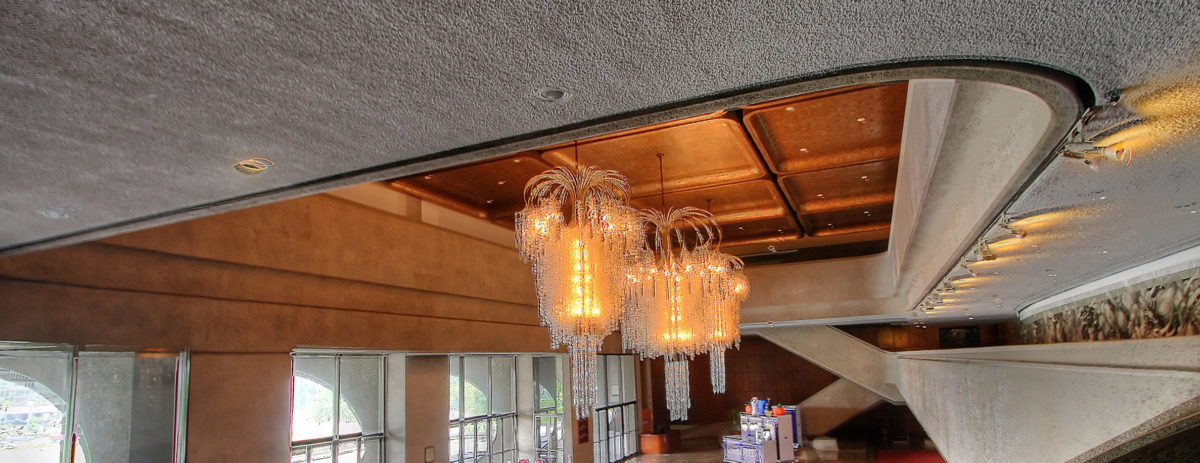It has been a 47-year itch waiting to be scratched.
Palayan Lamps was commissioned in 1969 to fabricate and install the three capiz-and-crystal chandeliers of the Cultural Center of the Philippines. It was only after 47 years, in 2016, that we were called back to refurbish these chandeliers in preparation for the Center’s 50th Anniversary in 2019.
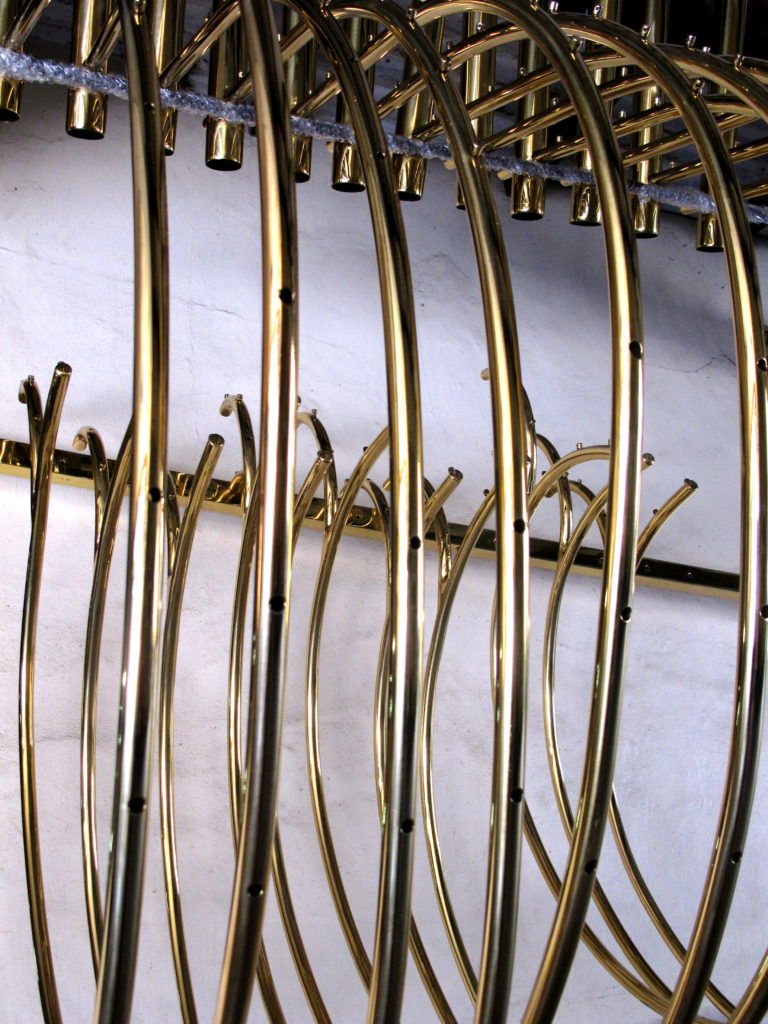
Over the intervening years, the brass arms of the chandelier had oxidized and lost all its shine. Capiz tiles had clouded over and become less translucent. A lot of the Austrian cut-glass trim had fallen and been lost. Perhaps because of budget constraints and schedule conflicts, these chandeliers were never seriously maintained. In-house maintenance would merely dust and replace busted bulbs, but these efforts had no hope of bringing back the chandeliers to their original state. In fact, in an attempt to improve the tarnished brass parts, some pieces, which were originally mirror-polished, were serviced in place and painted black. For sure, the chandeliers were never brought down and dismantled for the needed servicing.
These chandeliers were designed by Dale Keller and Associates of Hong Kong, the CCP’s interior designers in close collaboration with National Artist, Arch. Leandro Locsin, the CCP’s architects. Even to this date, the design of the chandeliers’ structure, its general silhouette, was unique in comparison to the more popular all-glass chandeliers from Europe. Most especially, the daring use of capiz (an organic element) in combination with brass and glass was innovative and a design statement in itself. Capiz pendant lamps at that time were commonly seen in the form of Tiffany shades with capiz cut-outs and simple cascading shower-type pendants from Quinta market in Quiapo. No substantial project in the Philippines had ventured to use capiz so prominently. But the design mandate then to Locsin and Keller must have been apparently clear: make it Filipino, make it contemporary.
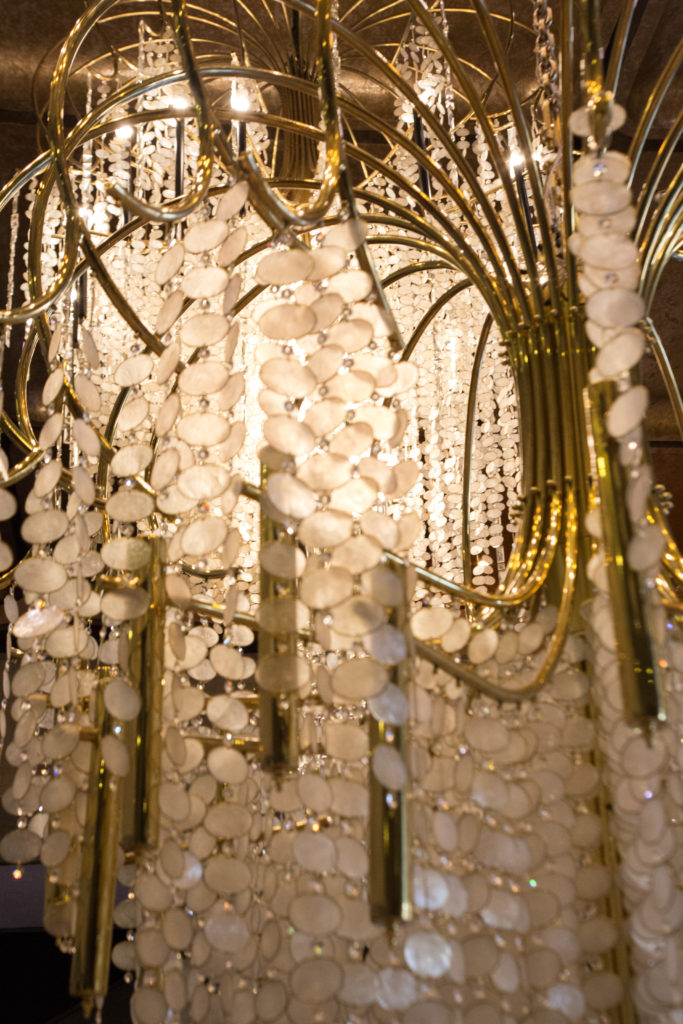
It is noteworthy that this type of lamp design has since been resurrected in our many projects. CCP’s former neighbors, the old Hyatt Hotel on Roxas Blvd., followed shortly with their own version of capiz-glass chandeliers for their lobby. When the hotel closed down, these chandeliers were repurposed for use in the chapel of the Misibis Bay Resort in Albay. But in whatever present form capiz chandeliers take, we always look back to the CCP chandeliers as what started it all.
How do you handle a chandelier weighing more than +700 kilos, 3 meters in diameter, and some 6 meters high without using a crane? A lot of muscle power together with some heavy-duty block-and-tackles will do the job. Fixing such a behemoth to a concrete slab anchor, through a dark and dusty crawlspace barely 24 inches high, also took a lot of perseverance. Need we mention that the chandeliers had to be lifted to a ceiling that was some +30 meters high. Because of its weight, the chandelier had to be hoisted without some of its trim. These strands then had to be individually attached by men balancing on very high, precarious scaffoldings. It is understandable why past maintenance work on these chandeliers did not even consider pulling them down.
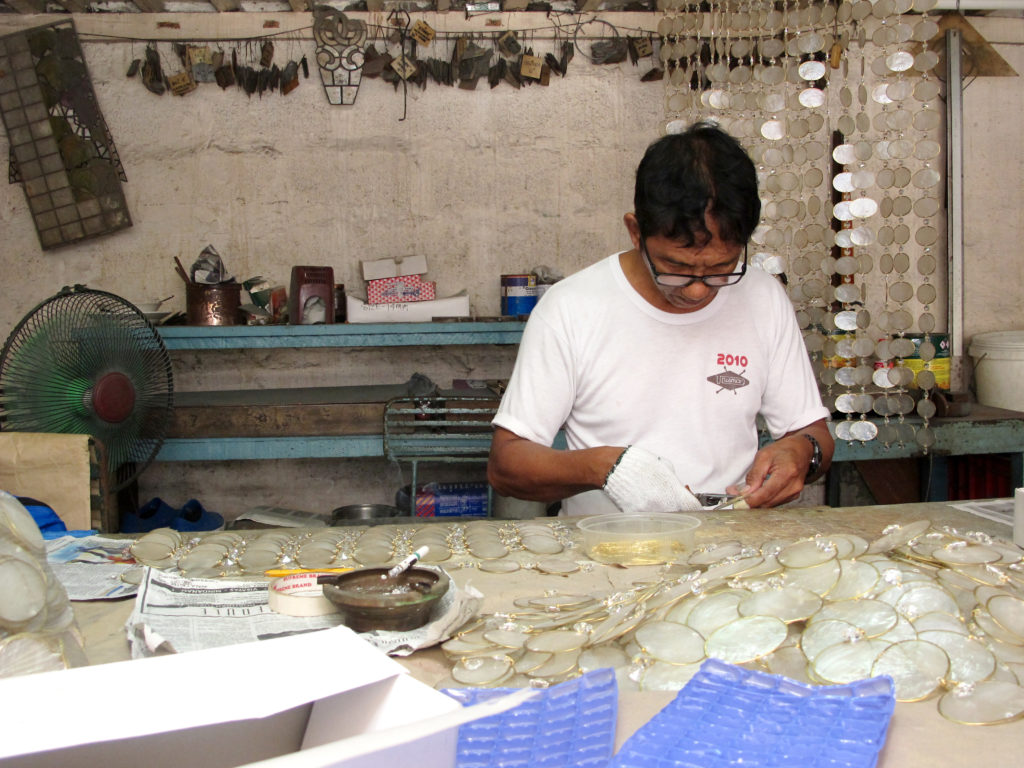
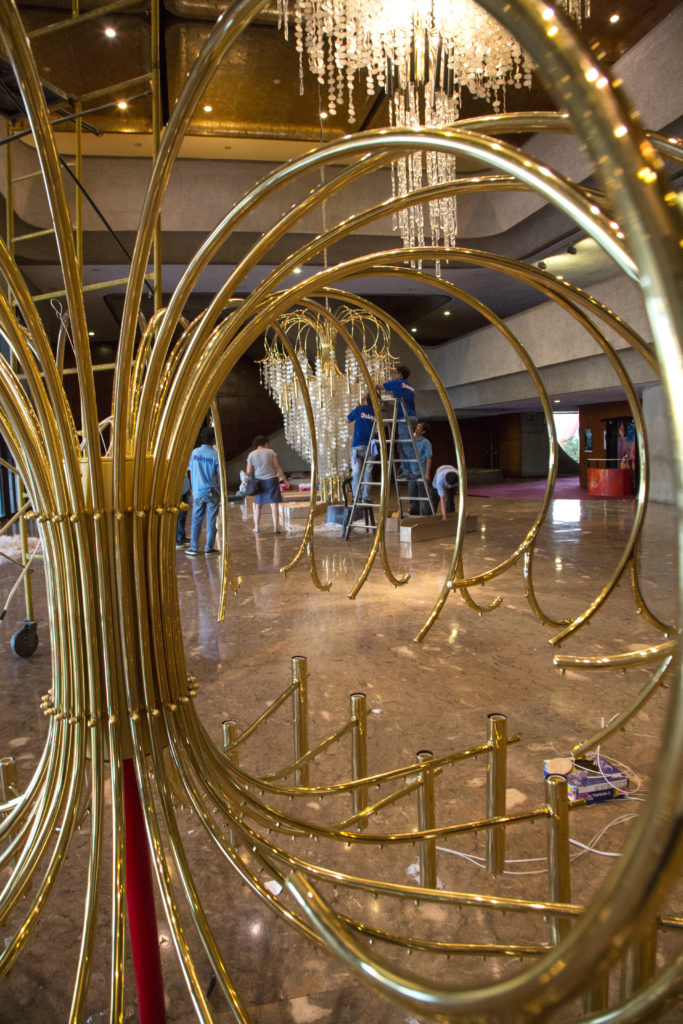
All the capiz tiles in the chandeliers were replaced. Each raw capiz shell was trimmed to size, scraped, washed with muriatic acid, polished, bound by brass edging and lacquer coated to seal the shine. All these +11,000 capiz shells needed by one chandelier were done by hand. Some +4,500 new octagonal crystal beads were then interspersed and stranded with the new capiz shells. CCP management had insisted that the capiz tiles would be reoriented from the original with their long dimension horizontal. This they felt would present a broader side of the capiz shell to view. While the Austrian rectangular glass prisms were reused, new premium-grade K9 crystal octagonal beads were stranded with the capiz. K9 crystal is a type of laboratory glass that is used in cameras and microscopes, cut by machines and polished by hand. Cheaper many fold than the equivalent popular Swarovski crystals, they are hardly distinguishable from each other in terms of shine, brilliance, and color. At a friendly budget, this was seen as a welcome affordable improvement of the chandeliers’ glitter.
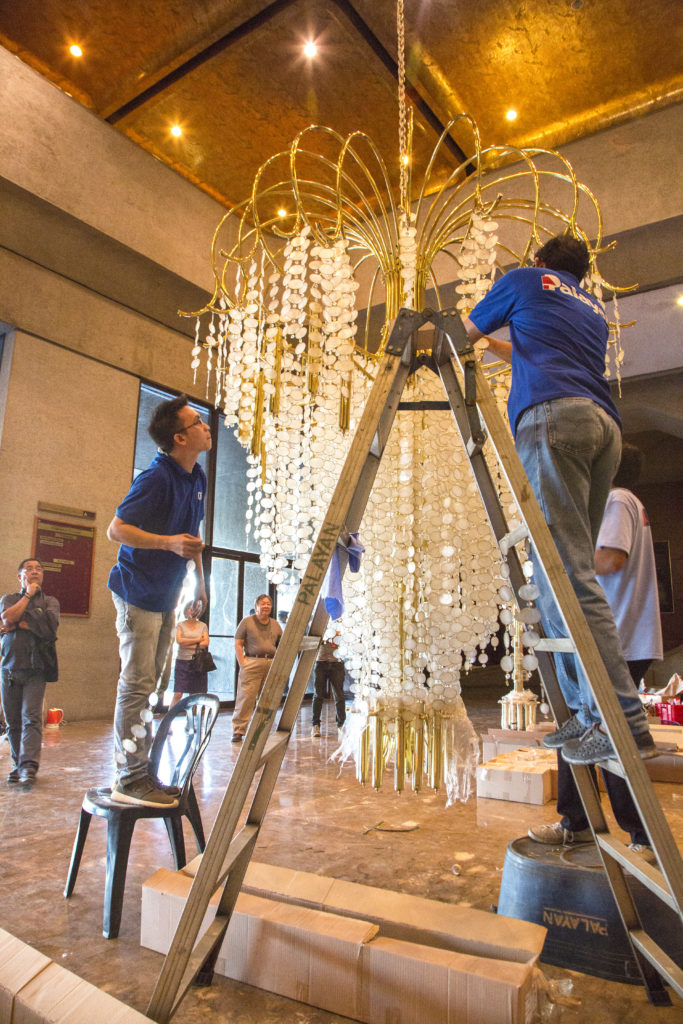
The luminaire members are all solid brass. Upon disassembly, they were all soaked in nitric acid to remove whatever lacquer remained and clear the accumulated dirt and grime of 47 years. The brass members were then polished on mechanical buffing wheels. When their original shine had been restored, they were then given a new coat of clear lacquer and baked in an oven to seal this protective coat. Such metal treatment would ideally protect the brass from oxidation for some 4-6 years, but definitely not 47 years.
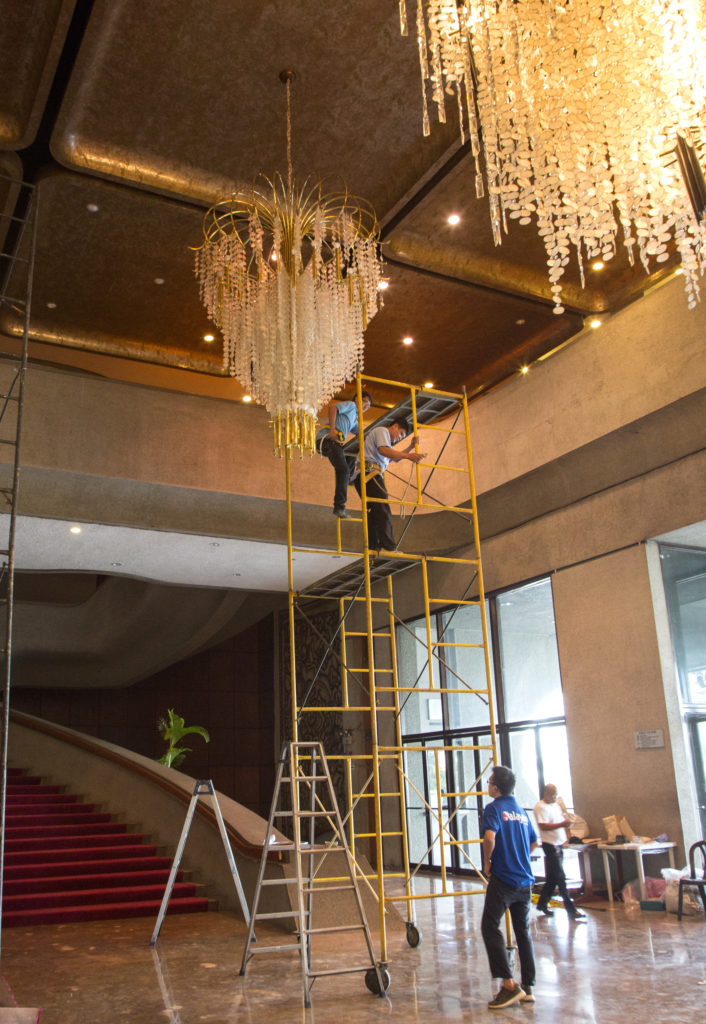
Finally, all the sockets and electrical wirings were changed. The 61 bulbs on each chandelier were replaced. Reassembly had to be done on site as transportation of built-up lamps would be prone to breakage.
Thus ends the 47-year wait for us to scratch this itch. Hopefully, when one next visits the CCP and looks up at the omnipresent three chandeliers, one would do so approvingly of our efforts to bring them back to their 1969 beauty.

